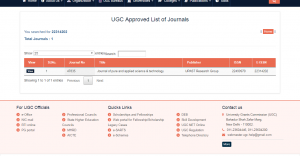The Detection of Antibiotic Susceptibility Patterns of Multi-Drug Resistant Bacteria especially those Producing Extended-Spectrum Beta-Lactamases (ESBL)
Tuhiram Dixit1,*, Dr. Mukta Sharma2 and Nalin Sajwan3
Technologist, Asian Institute of Medical Sciences, Faridabad, Haryana, India.
2Department of Microbiology, S.B.B. Dental College and Research Centre, Ghaziabad, U.P., India.
3Department of Microbiology, S.G.P.G.I., Lucknow, India.
Over the last few decades, β-lactams are the most widely used and favored antimicrobials worldwide, because of their efficacy, broad spectra and low toxicity. They inhibit the bacterial penicillin-binding proteins (PBPs), which are the enzymes that catalyze the final cross-linking of the bacterial cell wall polymer, peptidoglycan. However, due to heavy use of β-lactams antibiotics, bacteria developed various mechanism of resistance. Modification or substitution of the PBPs is important mechanism in gram-positive cocci, while production of β-lactamases is main cause of resistance among gram-negative bacilli. Mostly plasmid harbors the resistance gene and therefore, is crucial in disseminating resistance into previously susceptible species. Throughout the 1960s and 1970s there was a relentless rise in reports of resistance to β-lactams as a consequence of the selection of bacteria that produce β-lactamases.
Keywords: Penicillin-Binding Protein (PBP), β-lactams antibiotics, Gram-positive cocci, Gram-negative bacilli.





